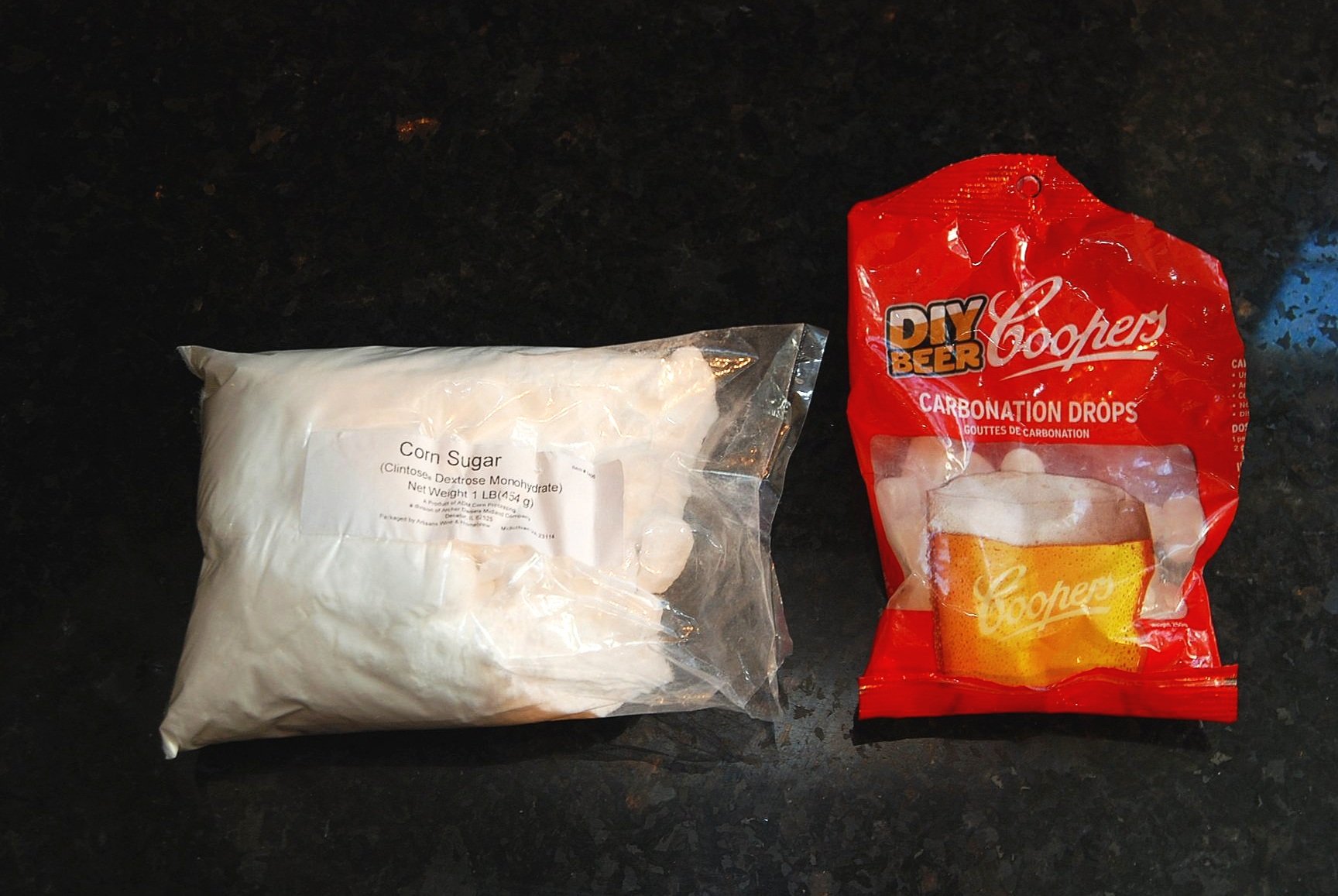Carbonation Drops vs. Priming Sugar
As mentioned in the learn to bottle post, when bottling your homebrew you have two main options for carbonating beer - carbonation drops and priming sugar.
Regardless of the method chosen, both do the same thing - they introduce a little additional sugar to the beer with the intention of starting fermentation again. When transferring your beer from carboy to bottle, you left most of the sediment and yeast behind but there still will be some residual yeast caught in suspension in the beer. You can harness the power of this yeast through fermentation by feeding it a little extra sugar which will yield two byproducts - a trace amount of alcohol and more importantly, the carbon dioxide gas that will carbonate your beer. The cap that you’ve attached to the bottle will trap in that CO2, keeping the bubbles in your bottle (remember that during fermentation we diverted this gas out of your beer). Whatever method you decide to use will come down to weighing the pros and cons of each.
On the right in the above image are carbonation drops. To use these drops all you have to do is place one inside of a cleaned and sanitized bottled right before you fill it with beer. It’s as easy as that. On the left is corn sugar, aka dextrose, one of many types of priming sugar. Priming sugar is any type of sugar that’s added mixed with water and added to a beer bottle (or even keg). The key point for priming sugar is that it must be mixed into boiling water in order to 1) dissolve the sugar and 2) sterilize the mixture (remember, if its going to touch your finished beer it has to be sterilized so as to avoid introduction of bacteria). In addition to dextrose, lots of different types of sugar can be used here - regular white sugar, honey, cane sugar - just stay away from anything like brown sugar or molasses as they can impart their own flavor into the beer.
There are two big advantages of priming sugar over carbonation drops. Cost is one - carbonation drops will cost roughly $7 for a pack of 60. That’s about $0.11 each or $0.93 per 8 bottle batch of beer. Corn sugar is cheap - you can buy a pound of it for about the same price as a bag of drops and each pound sized bag will carbonate roughly 16 gallons of beer. For corn sugar, use about 1 oz of dissolved into 1/4 cup of boiling water for one gallon of beer. The tricky thing here to remember is that if you only have say 90% of a gallon of beer (the sediment and yeast at the bottom of the carboy don’t count as beer), then you’ll only want to use 90% of the mixture you just made. Use too much and you’ll over-carbonate your beer.
The other advantage of using priming sugar is that you can really dial in the carbonation. For example, if you’re making a Stout you may use a little less priming sugar compared to when you bottle a Kolsch which would typically be more carbonated than a Stout. Use an online calculator like this one to take the guesswork out of the process.
In order to effectively use priming sugar, you’ll need to transfer the beer from a carboy to a temporary ‘holding vessel’ prior to transferring it to bottles. Why? Because you need a place to mix the priming sugar solution into the beer without also mixing it into all of the sediment and yeast into the beer. This ‘holding vessel’ can be another cleaned and sanitized carboy, a piece of gear called a bottling bucket (sometimes they have spigots near the bottom to allow you to use gravity when filling beer bottles or a keg), or even another pot. This extra transfer is one of biggest cons for using priming sugar. The extra transfer required, along with the (gentle) stirring needed to mix the beer and the priming sugar together, provide ample additional opportunities to introduce unwanted oxygen which is your worst enemy here as it will oxidize your beer and effectively turn it into wet cardboard. Plus its an extra step to work through - more things to clean, sanitize and clean again.
Beyond the higher cost, the big con for bottling drops is that they can only produce one level of carbonation. That is to say that you can’t customize carbonation levels for different styles of beer. In my opinion that’s a small price to pay for the convenience of being able to bottle straight from the primary fermentation vessel (aka carboy) while keeping the chance of oxidation much lower.

